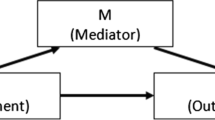ABSTRACT
Informative dropout can lead to bias in statistical analyses if not handled appropriately. The objective of this simulation study was to investigate the performance of nonlinear mixed effects models with regard to bias and precision, with and without handling informative dropout. An efficacy variable and dropout depending on that efficacy variable were simulated and model parameters were reestimated, with or without including a dropout model. The Laplace and FOCE-I estimation methods in NONMEM 7, and the stochastic simulations and estimations (SSE) functionality in PsN, were used in the analysis. For the base scenario, bias was low, less than 5% for all fixed effects parameters, when a dropout model was used in the estimations. When a dropout model was not included, bias increased up to 8% for the Laplace method and up to 21% if the FOCE-I estimation method was applied. The bias increased with decreasing number of observations per subject, increasing placebo effect and increasing dropout rate, but was relatively unaffected by the number of subjects in the study. This study illustrates that ignoring informative dropout can lead to biased parameters in nonlinear mixed effects modeling, but even in cases with few observations or high dropout rate, the bias is relatively low and only translates into small effects on predictions of the underlying effect variable. A dropout model is, however, crucial in the presence of informative dropout in order to make realistic simulations of trial outcomes.








Similar content being viewed by others
References
Heyting A, Tolboom JT, Essers JG. Statistical handling of drop-outs in longitudinal clinical trials. Stat Med. 1992;11(16):2043–61.
Siddiqui O, Hung HM, O'Neill R. MMRM vs. LOCF: a comprehensive comparison based on simulation study and 25 NDA datasets. J Biopharm Stat. 2009;19(2):227–46.
Laird NM. Missing data in longitudinal studies. Stat Med. 1988;7(1–2):305–15.
Rubin DB. Inference and missing data. Biometrika. 1976;63:581–92.
Little RJA, Rubin DB. Statistical analysis with missing data. New York: Wiley; 1987.
Gastonguay MR, French JL, Heitjan DF, Rogers JA, Ahn JE, Ravva P. Missing data in model-based pharmacometric applications: points to consider. J Clin Pharmacol. 2010;50(9 Suppl):63S–74.
Hu C, Sale ME. A joint model for nonlinear longitudinal data with informative dropout. J Pharmacokinet Pharmcodyn. 2003;30(1):83–103.
Gomeni R, Lavergne A, Merlo-Pich E. Modelling placebo response in depression trials using a longitudinal model with informative dropout. Eur J Pharm Sci. 2009;36(1):4–10.
Hu C, Szapary PO, Yeilding N, Zhou H. Informative dropout modeling of longitudinal ordered categorical data and model validation: application to exposure-response modeling of physician's global assessment score for ustekinumab in patients with psoriasis. J Pharmacokinet Pharmacodyn. 2011;38(2):237–60.
Friberg LE, de Greef R, Kerbusch T, Karlsson MO. Modeling and simulation of the time course of asenapine exposure response and dropout patterns in acute schizophrenia. Clin Pharmacol Ther. 2009;86(1):84–91.
Bjornsson MA, Simonsson USH. Modelling of pain intensity and informative dropout in a dental pain model after naproxcinod, naproxen and placebo administration. Br J Clin Pharmacol. 2011;71(6):899–906.
Beal SLSL, Boeckmann AJ. NONMEM users guides. Ellicott City: ICON Development Solutions; 1989–2006.
Lindbom L, Pihlgren P, Jonsson EN. PsN-Toolkit—a collection of computer intensive statistical methods for non-linear mixed effect modeling using NONMEM. Comput Methods Programs Biomed. 2005;79(3):241–57.
Jonsson EN, Karlsson MO. Xpose—an S-PLUS based population pharmacokinetic/pharmacodynamic model building aid for NONMEM. Comput Methods Programs Biomed. 1999;58(1):51–64.
Acknowledgments
AstraZeneca is gratefully thanked for supporting this work.
Author information
Authors and Affiliations
Corresponding author
Rights and permissions
About this article
Cite this article
Björnsson, M.A., Friberg, L.E. & Simonsson, U.S.H. Performance of Nonlinear Mixed Effects Models in the Presence of Informative Dropout. AAPS J 17, 245–255 (2015). https://doi.org/10.1208/s12248-014-9700-x
Received:
Accepted:
Published:
Issue Date:
DOI: https://doi.org/10.1208/s12248-014-9700-x




